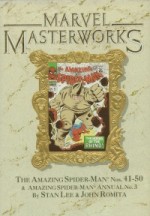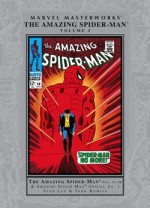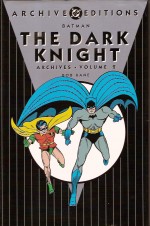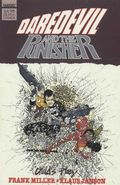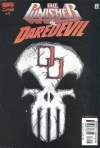
By Gardner Fox, Carmine Infantino & various (DC Comics)
ISBN: 978-1-4012-1042-2
Once upon a time American comics editors believed readers would become jaded if characters were over-used or over-exposed and so to combat that potential danger – and for sundry other commercial and economic reasons – they developed back-up features in most of their titles. By the mid-1960s the policy was largely abandoned as resurgent superheroes sprang up everywhere and readers just couldn’t get enough…but there were still one or two memorable holdouts.
In late 1963 Julius Schwartz took editorial control of Batman and Detective Comics and finally found a place for a character who had been lying mostly fallow ever since his debut as a walk-on in the April/May 1960 Flash.
The Elongated Man was Ralph Dibny, a circus-performer who discovered an additive in soft drink Gingold which seemed to give certain people increased muscular flexibility. Intrigued, he refined the chemical until he had developed a serum which gave him the ability to stretch, bend and compress his body to an incredible degree. Then Ralph had to decide how to use his new powers…
This charming, witty and very pretty compilation gathers all the Flash guest appearances from issues #112, 115, 119, 124, 130, 134, and 138 spanning April/May 1960 to August 1963 before re-presenting the Stretchable Sleuth’s entire scintillating run from Detective Comics #327-371 (May 1964-January 1968).
Designed as a modern take on the classic Golden Age champion Plastic Man, Dibny debuted in Flash #112 in ‘The Mystery of the Elongated Man!’ as a mysterious masked yet attention-seeking elastic do-gooder, of whom the Scarlet Speedster was nonetheless highly suspicious, in a cunningly crafted crime caper by John Broome, Carmine Infantino & Joe Giella. Dibny returned in #115 (September 1960 and inked by Murphy Anderson) when aliens attempted to conquer the Earth and the Vizier of Velocity needed ‘The Elongated Man’s Secret Weapon!’ as well as the guest-star himself to save the day.
In Flash #119 (March 1961), Flash rescued the vanished hero from ‘The Elongated Man’s Undersea Trap!’ which introduced the vivacious Sue Dibny (as a newly wed “Mrs Elongated Manâ€) in a mysterious and stirring tale of sub-sea alien slavers by regular creative team Broome, Infantino & Giella.
The threat was again extraterrestrial with #124′s alien invasion thriller ‘Space-Boomerang Trap!’ (November 1961) which featured an uneasy alliance between the Scarlet Speedster, Elongated Man and the sinister Captain Boomerang who naturally couldn’t be trusted as far as you could throw him…
Ralph collaborated with Flash’s junior partner in #130 (August 1962) only just defeating the wily Weather Wizard when ‘Kid Flash Meets the Elongated Man!’ but then sprang back into action with – and against – the senior partner in Flash #134 (February 1963), seemingly allied with Captain Cold ‘The Man who Mastered Absolute Zero!’ in a flamboyant thriller that almost ended his budding heroic career…
Gardner Fox scripted ‘The Pied Piper’s Double Doom!’ in Flash #138 (August 1963) a mesmerising team-up which saw both Elongated Man and the Scarlet Speedster enslaved by the Sinister Sultan of Sound, before ingenuity and justice finally prevailed.
When the back-up spot opened in Detective Comics (a position held by the Martian Manhunter since 1955 and only vacated because J’onn J’onzz had been promoted to the lead position in House of Mystery) Schwartz had Ralph Dibny slightly reconfigured as a flamboyant, fame-hungry, brilliantly canny travelling private eye solving mysteries for the sheer fun of it. Aided by his equally smart but thoroughly grounded wife, the short tales were patterned on the classic “Thin Man†filmic adventures of Nick and Norah Charles, blending clever, impossible crimes with slick sleuthing, all garnished with the outré heroic permutations and frantic physical antics first perfected in Jack Cole’s Plastic Man.
These complex yet uncomplicated sorties, drenched in fanciful charm and sly dry wit, began in Detective Comics #327 (May 1964) and ‘Ten Miles to Nowhere!’ (by Fox & Infantino, who inked himself for all the early episodes) wherein Ralph, who had publicly unmasked and become a minor celebrity, discovered that someone had been stealing his car and bringing it back as if nothing had happened. Of course it had to be a clever criminal plot of some sort…
A month later he solved the ‘Curious Case of the Barn-door Bandit!’ and debuted his rather revolting trademark of manically twitching his expanded nose whenever he “detected the scent of mystery in the air†before heading for cowboy country to unravel the ‘Puzzle of the Purple Pony!’ and play cupid for a young couple hunting a gold mine in #329.
Ralph and Sue were on an extended honeymoon tour, making him the only costumed hero without a city to protect. When they reached California Ralph became embroiled in a ‘Desert Double-Cross!’ where hostage-taking thieves raided the home of a wealthy recluse after which Detective #331 offered a rare full-length story in ‘Museum of Mixed-Up Men!’ (Fox, Infantino & Giella) as Batman, Robin and the Elongated Man united against a super-scientific felon able to steal memories and reshape victims’ faces.
Returned to a solo support role in #332, the Ductile Detective discovered Sue had been replaced by an alien in ‘The Elongated Man’s Other-World Wife!’ (with Sid Greene becoming the new permanent inker). Of course, nothing was as it seemed…
‘The Robbery That Never Happened!’ began when a jewellery-store customer suspiciously claimed he had been given too much change whilst ‘Battle of the Elongated Weapons!’ in #334 concentrated on a crook who had adapted Ralph’s Gingold serum to affect objects, after which bombastic battle it was back to mystery-solving when the Elongated Man was invited by Fairview City to round up a brazen bunch of uncatchable bandits in ‘Break Up of the Bottleneck Gang!’
While visiting Central City again Ralph was lured to the Mirror Master’s old lair and only barely survived ‘The House of “Flashy†Traps!’ and then risked certain death in the ‘Case of the 20 Grand Pay-off!’ by replacing Sue with a look-alike – for the best possible reasons – but without her knowledge or permission…
Narrowly surviving his wife’s wrath by turning the American tour into a World cruise, Ralph then tackled the ‘Case of the Curious Compass!’ in Amsterdam, foiling a gang of diamond smugglers, before returning to America and ferreting out funny-money pushers in ‘The Counterfeit Crime-Buster!’
Globe-trotting creator John Broome returned to script ‘Mystery of the Millionaire Cowboy!’ in Detective #340 (June 1965) as Ralph and Sue stumbled onto a seemingly haunted theatre and found crooks at the heart of the matter, whilst ‘The Elongated Man’s Change-of-Face!’ (by Fox, Infantino & Greene) saw a desperate newsman publish fake exploits to draw the fame-fuelled hero into investigating a town under siege, and ‘The Bandits and the Baroness!’ (Broome) saw the perpetually vacationing couple check in at a resort where every other guest was a Ralph Dibny, in a classy insurance scam story heavy with intrigue and tension.
A second full-length team-up with Batman featured in Detective Comics #343 (September 1965, by Broome, Infantino & Giella), in ‘The Secret War of the Phantom General!’; a tense action-thriller pitting the hard-pressed heroes against a hidden army of gangsters and Nazi war criminals, determined to take over Gotham City.
Having broken Ralph’s biggest case the happy couple headed for the Continent and encountered ‘Peril in Paris!’ (Broome, Infantino & Greene) when Sue went shopping as an ignorant American and returned a few hours later a fluent French-speaker…
‘Robberies in Reverse!’ (Fox) saw a baffling situation when shopkeepers began paying customers, leading Ralph to a severely skewed scientist’s accidental discovery whilst #346’s ‘Peephole to the Future!’ (Broome) saw the Elongated Man inexplicably develop the power of clairvoyance, which cleared up long before he could use it to tackle ‘The Man Who Hated Money!’ (Fox); a bandit who destroyed every penny he stole.
‘My Wife, the Witch!’ was Greene’s last ink job for a nearly a year; a Fox thriller wherein Sue apparently gained magical powers whilst ‘The 13 O’clock Robbery!’ with Infantino again inking his own work, found Ralph walk into a bizarre mystery and deadly booby-trapped mansion, before Hal Jordan’s best friend sought out the stretchable Sleuth to solve the riddle of ‘Green Lantern’s Blackout!’ – an entrancing, action-packed team-up with a future Justice League colleague, after which ‘The Case of the Costume-made Crook!’ found the Elongated Man ambushed by a felon using his old uniform as a implausible burglary tool.
Broome devised ‘The Counter of Monte Carlo!’ as the peripatetic Dibnys fell into a colossal espionage conspiracy at the casino and became pawns of a fortune teller in ‘The Puzzling Prophecies of the Tea Leaves!’ (Fox) before Broome delighted one more time with ‘The Double-Dealing Jewel Thieves!’ as a museum owner found that his imitation jewel exhibit was indeed filled with fakes…
As Fox assumed full scripting duties Mystic Minx Zatanna guest-starred in #355’s ‘The Tantalising Troubles of the Tripod Thieves!’, wherein stolen magical artefacts led Ralph into conflict with a band of violent thugs whilst ‘Truth Behind the False Faces!’ saw Infantino bow out on a high note as the Elongated Man helped a beat cop to his first big bust and solved the conundrum of a criminal wax museum.
Detective #357 (November 1966) featured ‘Tragedy of the Too-Lucky Thief!‘ (by Fox, Murphy Anderson & Greene) as the Dibnys discovered a gambler who hated to win but could not lose whilst Greene handled all the art on ‘The Faker-Takers of the Baker’s Dozen!’ wherein Sue’s latest artistic project led to the theft of a ancient masterpiece. Anderson soloed with Fox’s ‘Riddle of the Sleepytime Taxi!’, a compelling and glamorous tale of theft and espionage and when Ralph and Sue hit Swinging England in Detective #360 (February 1967, Fox & Anderson) with ‘London Caper of the Rockers and Mods!’, they met the monarch and prevented warring kid-gangs from desecrating our most famous tourist traps before heading home to ‘The Curious Clue of the Circus Crook!’ (Greene), wherein Ralph visited his old Big-Top boss and stopped a rash of robberies which had followed the show around the country.
Infantino found time in his increasingly busy schedule for a few more episodes, (both inked by Greene) beginning with ‘The Horse that Hunted Hoods’, a police steed with uncanny crime solving abilities, and continuing in a ‘Way-out Day in Wishbone City!’ wherein normally solid citizens – and even Sue – went temporarily insane and started a riot, after which unsung master Irv Novick stepped in to delineate the mystery of ‘The Ship That Sank Twice!’
‘The Crooks who Captured Themselves!’ (#365, with art by Greene) found Ralph losing control of his powers whilst Broome & Infantino reunited one last time for ‘Robber Round-up in Kiddy City!’ as, for a change, Sue sniffed out a theme-park mystery for Ralph to solve and Infantino finally bowed out with the superb ‘Enigma of the Elongated Evildoer!’ (written by Fox and inked by Greene) as the Debonair Detectives found a thief in a ski lodge who seemed to possess all Ralph’s elastic abilities…
The Atom guest-starred in #368, helping battle clock-criminal Chronos in ‘The Treacherous Time-Trap!’ by Fox, Gil Kane, Greene and iconoclastic newcomer Neal Adams illustrated the poignant puzzler ‘Legend of the Lover’s Lantern!’, after which Kane & Greene limned the intriguing all-action ‘Case of the Colorless Cash!’. The end of the year signalled the end of an era as Fox, Mike Sekowsky & Greene finished off the Elongated Man’s expansive run with the delightfully dizzy lost-loot yarn ‘The Bellringer and the Baffling Bongs’ (#371, January 1968).
With the next issue Detective Comics became an all Bat-family title and Ralph and Sue Dibny temporarily faded from view until revived as bit players in Flash and finally recruited into the Justice League as semi-regulars. Their charismatic relationship and unique genteel style has however, not been seen again: casualties of changing comics tastes and the replacement of sophistication with angsty shouting and testosterone-fuelled sturm und drang…
Witty, bright, clever and genuinely exciting these smart stories from a lost age are all beautiful to look at and a joy to read for any sharp kid and all joy-starved adults. This book is a shining tribute to the very best of DC’s Silver Age and a volume no fan of fun and adventure should be without.
© 1960, 1961, 1962, 1964, 1965, 1966, 1967, 1968, 2006 DC Comics. All Rights Reserved.


